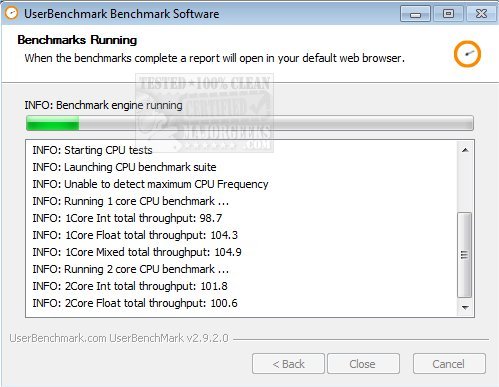UserBenchmark 5.3.6.0 has been released, offering users the ability to benchmark their PCs and compare the results with others who have similar hardware configurations. This tool is designed to assess the strengths and weaknesses of individual components by evaluating them against the ten most popular parts in their respective categories.
To use UserBenchmark, simply download and run the software, which conducts a series of checks including 4k alignment, Native Command Queuing (NCQ), TRIM, SATA, USB, and S.M.A.R.T. The benchmarking process evaluates various aspects of your system: for drives, it measures read, write, and mixed input/output performance; for CPUs, it tests integer, floating-point, and string processing capabilities; and for GPUs, it assesses 3D performance in DirectX 9 and DirectX 10 environments. After completing the tests, users can access detailed reports on userbenchmark.com.
With UserBenchmark, users can easily identify the strongest components in their systems, view speed test results from a large community of users, and compare their hardware against the highest-rated components in each category. Additionally, users can contribute to the platform by sharing their insights and experiences through voting.
In addition to benchmarking, users may find it helpful to explore related topics such as updating their Windows Experience Index score, learning how to determine the number of CPU cores, or finding out which graphic card is installed in their computers. This makes UserBenchmark not just a benchmarking tool, but a comprehensive resource for PC enthusiasts looking to optimize their systems.
As technology continues to evolve, user benchmarking tools like UserBenchmark will likely incorporate more advanced metrics and features to keep up with new hardware developments, ensuring that users receive accurate and relevant performance insights
To use UserBenchmark, simply download and run the software, which conducts a series of checks including 4k alignment, Native Command Queuing (NCQ), TRIM, SATA, USB, and S.M.A.R.T. The benchmarking process evaluates various aspects of your system: for drives, it measures read, write, and mixed input/output performance; for CPUs, it tests integer, floating-point, and string processing capabilities; and for GPUs, it assesses 3D performance in DirectX 9 and DirectX 10 environments. After completing the tests, users can access detailed reports on userbenchmark.com.
With UserBenchmark, users can easily identify the strongest components in their systems, view speed test results from a large community of users, and compare their hardware against the highest-rated components in each category. Additionally, users can contribute to the platform by sharing their insights and experiences through voting.
In addition to benchmarking, users may find it helpful to explore related topics such as updating their Windows Experience Index score, learning how to determine the number of CPU cores, or finding out which graphic card is installed in their computers. This makes UserBenchmark not just a benchmarking tool, but a comprehensive resource for PC enthusiasts looking to optimize their systems.
As technology continues to evolve, user benchmarking tools like UserBenchmark will likely incorporate more advanced metrics and features to keep up with new hardware developments, ensuring that users receive accurate and relevant performance insights
UserBenchmark 5.3.6.0 released
UserBenchmark will benchmark your PC and compare the results to other users with the same components.


